
Joshua Gibson was an American baseball catcher primarily in the Negro leagues. Baseball historians consider Gibson among the best power hitters and catchers in baseball history. In 1972, he became the second Negro league player to be inducted in the National Baseball Hall of Fame.
The Homestead Grays were a professional baseball team that played in the Negro leagues in the United States.

The Kansas City Monarchs were the longest-running franchise in the history of baseball's Negro leagues. Operating in Kansas City, Missouri, and owned by J. L. Wilkinson, they were charter members of the Negro National League from 1920 to 1930. J. L. Wilkinson was the first Caucasian owner at the time of the establishment of the team. In 1930, the Monarchs became the first professional baseball team to use a portable lighting system which was transported from game to game in trucks to play games at night, five years before any major league team did. The Monarchs won ten league championships before integration, and triumphed in the first Negro League World Series in 1924. The Monarchs had only one season in which they did not have a winning record. The team produced more major league players than any other Negro league franchise. It was disbanded in 1965.

William Julius "Judy" Johnson was an American professional third baseman and manager whose career in Negro league baseball spanned 17 seasons, from 1921 to 1937. Slight of build, Johnson never developed as a power threat but achieved his greatest success as a contact hitter and an intuitive defenseman. Johnson is regarded as one of the greatest third basemen of the Negro leagues. In 1975, he was elected into the Baseball Hall of Fame after being nominated by the Negro Leagues Committee.
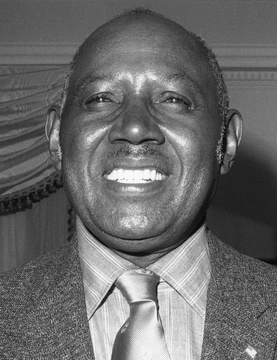
Walter Fenner "Buck" Leonard was an American first baseman in Negro league baseball and in the Mexican League. After growing up in North Carolina, he played for the Homestead Grays between 1934 and 1950, batting fourth behind Josh Gibson for many years. The Grays teams of the 1930s and 1940s were considered some of the best teams in Negro league history. Leonard and Gibson are two of only nine players in league history to win multiple batting titles.

Willard Jessie Brown, nicknamed "Home Run" Brown, was an American baseball player who played outfielder in the Negro leagues for the Kansas City Monarchs and in Major League Baseball (MLB) for the St. Louis Browns. For the Monarchs, he led the Negro American League in hits for eight seasons and runs batted in (RBI) seven times during his career. His eight times leading a league in hits is tied with Ty Cobb for most in baseball history while his seven times leading in RBI for a league is tied for second-most in baseball history with Josh Gibson; Gibson and Brown also finished in the top two in batting average in five seasons each, most in Negro league history. He is a member of the National Baseball Hall of Fame and Museum.

Kansas City Municipal Stadium was an American baseball and football stadium in the central United States, located in Kansas City, Missouri. It was located at the corner of Brooklyn Avenue and E. 22nd Street.
Professional baseball leagues, amateur-baseball organizations, sportswriting associations, and other groups confer awards on various baseball teams, players, managers, coaches, executives, broadcasters, writers, and other baseball-related people for excellence in achievement, sportsmanship, and community involvement.
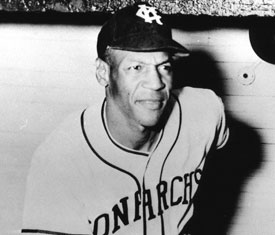
John Jordan "Buck" O'Neil Jr. was a first baseman and manager in the Negro American League, mostly with the Kansas City Monarchs. After his playing days, he worked as a scout and became the first African American coach in Major League Baseball. In his later years he became a popular and renowned speaker and interview subject, helping to renew widespread interest in the Negro leagues, and played a major role in establishing the Negro Leagues Baseball Museum in Kansas City, Missouri. He was elected to the Baseball Hall of Fame in 2022 as an executive.

The East–West All-Star Game was an annual all-star game for Negro league baseball players. The game was the brainchild of Gus Greenlee, owner of the Pittsburgh Crawfords. In 1933 he decided to emulate the Major League Baseball All-Star Game, using Negro league players. Newspaper balloting was set up to allow the fans to choose the starting lineups for that first game, a tradition that continued through the series' end in 1962. Unlike the white All-Star game which is played near the middle of the season, the Negro All-Star game was held toward the end of the season.
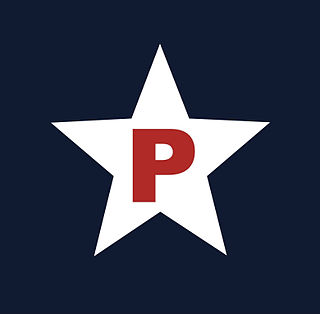
The Philadelphia Stars were a Negro league baseball team from Philadelphia. The Stars were founded in 1933 when Ed Bolden returned to professional black baseball after being idle since early 1930. The Stars were an independent ball club in 1933, a member of the Negro National League from 1934 until the League's collapse following the 1948 season, and affiliated with the Negro American League from 1949 to 1952.

The Hilldale Athletic Club were an American professional Negro league baseball team based in Darby, Pennsylvania, west of Philadelphia.
Larry Stewart was an American philanthropist from Kansas City better known as "Kansas City's Secret Santa." After poor beginnings, Stewart — from 1979 through 2006 — made a practice of anonymously handing out small amounts of cash, typically in the form of hundred-dollar bills, to needy people.
The Kansas City Royals' 2008 season began with the team searching for its 15th manager in franchise history. Trey Hillman, former minor league baseball and Hokkaido Nippon Ham Fighters manager, was hired as the team's skipper on October 19, 2007.
The 2006 Philadelphia Phillies season was the 124th season in the history of the franchise. The Phillies finished in second place in the National League East, 12 games behind the New York Mets, and three games behind the Los Angeles Dodgers in the NL Wild-Card race. The Phillies, managed by Charlie Manuel, played their home games at Citizens Bank Park. Phillies first baseman Ryan Howard was the National League's Most Valuable Player for the 2006 season, and was the winner of the Century 21 Home Run Derby, held during the All-Star Break at Pittsburgh.

The Buck O'Neil Lifetime Achievement Award is an award presented by the National Baseball Hall of Fame not more than once every three years to honor an individual who enhances baseball's positive image on society, who broadens the game's appeal, and whose integrity and dignity are comparable to the namesake of the award, John Jordan "Buck" O'Neil. There have been five recipients of the award since its inception in 2008.
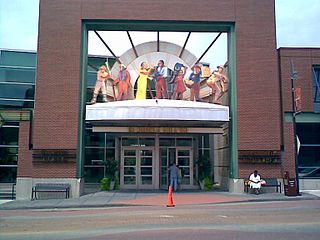
The Legacy Awards are presented annually by the Negro Leagues Baseball Museum (NLBM), headquartered in Kansas City, Missouri. The "Hall of Game Award"—established in 2014 and honoring players who personify "the spirit of the way the game was played in the Negro Leagues"—is the only such award actively presented since 2018.

George Lawrence Lester is a Negro league baseball author, historian, statistical researcher, and lecturer.
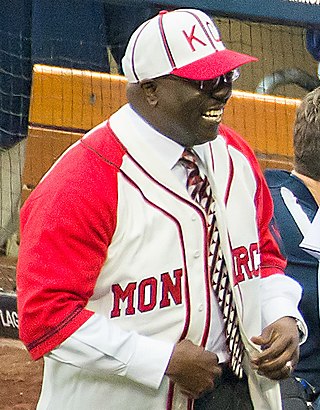
Bob Kendrick is the President of the Negro Leagues Baseball Museum (NLBM) in Kansas City, Missouri. Prior to that he served as the museum's first Director of Marketing and was promoted to Vice President of Marketing in 2009. He left to serve as Executive Director of the National Sports Center for the Disabled Kansas City in 2010 and returned to the NLBM in 2011.
Elections to the National Baseball Hall of Fame for 2022 were conducted according to the rules most recently amended in 2016. As in the past, the Baseball Writers' Association of America (BBWAA) voted by mail to select from a ballot of recently retired players, with results announced on January 25. David Ortiz, in his first year of eligibility, was the only player elected from the BBWAA ballot.
















